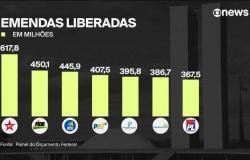Tesla is far from being the darling of Wall Street today.
Gone are the days when its market value exceeded US$1 trillion (at the end of 2021) — and everything indicated that the electric vehicle giant was unbeatable.
At that time, it broke production and delivery records, while its share price rose, taking the company to the level of companies like Apple and Amazon.
Now, the company owned by Elon Musk, its founder and CEO, faces major challenges that make it difficult to advance in a highly competitive market.
Sales, profits, market value and many shareholders’ confidence in the company’s ability to innovate and grow in the long term all fell.
Chinese electric vehicle companies have lowered their prices, affecting demand for their cars, and the recent layoffs announced by Musk have not been well received by the market.
Some of the company’s problems began in October, when Musk warned that demand was starting to slow.
And when its biggest competitor, Chinese giant BYD, briefly overtook Tesla as the world’s biggest seller of electric cars in the last quarter of last year, things didn’t look good.
Announcements of cuts in production at the company’s Gigafactory in Shanghai and problems related to the production of the Cybertruck pickup truck and autonomous cars did not help to improve the climate either.
A good portion of analysts and investors say that while building a fully autonomous vehicle is crucial to Tesla’s prospects, making an affordable electric car is important to driving growth today.
This week, the news has not been positive for the American company, after the publication of financial results below market analysts’ expectations.
Since its creation in 2003, Tesla’s trajectory has always had ups and downs. Many wonder if this is another crisis that will pass, like the others, or if the automotive giant has reached a breaking point.
Below are four points that explain the crisis the company is going through.
Tesla announced in mid-April that it would lay off more than 10% of its employees worldwide, as part of a restructuring plan aimed at reducing costs and improving the company’s position.
After years of rapid expansion, this internal restructuring — which will affect around 15,000 employees — has generated concern in the markets, as it comes on top of a significant reduction in vehicle deliveries this year.
“There’s nothing I hate more, but it has to be done,” Musk said.
Analysts at consultancies Gartner and Hargreaves Lansdown argued that the cuts were a sign of cost pressures as the carmaker invested in new models and artificial intelligence.
A few days ago, one of the executive team members, Andrew “Drew” Baglino, said in a post on X (formerly Twitter) that he had made the “difficult decision” to leave the company after 18 years, adding more uncertainty to the changes at the company. .
The impact of changes in direction and strategy for Tesla’s future worries investors, especially with regard to succession in the company’s leadership.
Musk has led Tesla since 2008, but his attention has been divided between other projects, such as SpaceX and Neuralink.
The departure, in August, of the then financial director, Zachary Kirkhorn, another likely successor, was also interpreted as a sign of uncertainty.
The debate has revolved around two fundamental aspects: the challenges the company faces in terms of its growth strategy and its direction.
See who are the billionaires who became richest in 2023
This week, the automotive giant released the results of its performance during the first quarter of this year. If there was already concern among some investors, the data presented only fueled a climate of uncertainty regarding future plans.
Tesla reported a 55% drop in profits compared to the first quarter of last year.
It also saw a 9% drop in revenue over the same period, the biggest year-over-year decline since 2012.
Another factor that has worked against the company so far this year has been the recall of its most recent vehicle, the Cybertruck pickup truck.
The vehicle had a defect in the accelerator pedal that increased the risk of accidents.
In the quarterly reports that Tesla presents to shareholders, the company refers to “deliveries”, that is, the vehicles that the company delivers after receiving orders.
In this way, car deliveries are what comes closest to the concept of car sales, since sales are not precisely defined in the company’s formal communications, as explained by broadcaster CNBC.
Therefore, vehicle deliveries fell 8.5% in the first quarter of this year, compared to the same period last year — the first drop since 2020.
This drop, experts say, may be related, in addition to the underlying causes, to some circumstantial factors — such as interruptions in global shipping or a fire in its European factory.
The scenario is complex not only due to the drop in sales, but also due to the reduction in vehicle prices.
A few days ago, it was announced that the company would reduce the price of models Y, X and S by around US$2,000 each.
Despite all the challenges, Elon Musk maintained an optimistic speech this week about the company’s prospects. He told investors that he will bring forward the launch of new models from the second half of 2025.
In a conversation with shareholders, Musk made it clear that he also has bigger ambitions, such as his bets on autonomous vehicles and the development of artificial intelligence.
Tesla “should be considered an artificial intelligence robotics company,” not a car manufacturer, Musk said.
But these ideas have been questioned by some analysts. Deutsche Bank states, for example, that driverless vehicles face “technological, regulatory and operational challenges”.
Tesla shares had already fallen over the last year, reflecting factors such as high interest rates in many countries, which made it difficult to access financing for the purchase of its electric cars.
The company’s share price fell by 40% this year, leading the company to have a market value close to US$460 billion — at the close of Wednesday (24/4).
And since November 2021, when each share of the company was worth more than US$400, it has dropped to around US$162.
The 40% drop in Tesla shares this year caused the company to drop some positions in the rankings of the largest companies in the United States.
The company ranked seventh in market capitalization within the S&P 500 index at the beginning of this year, according to Dow Jones Market Data, but is now in 14th place.
Within a panorama that seems less than encouraging, Tesla explained this week that it would present “new models” next year, without offering further details. And he promised to accelerate the launch of models with more affordable prices.






